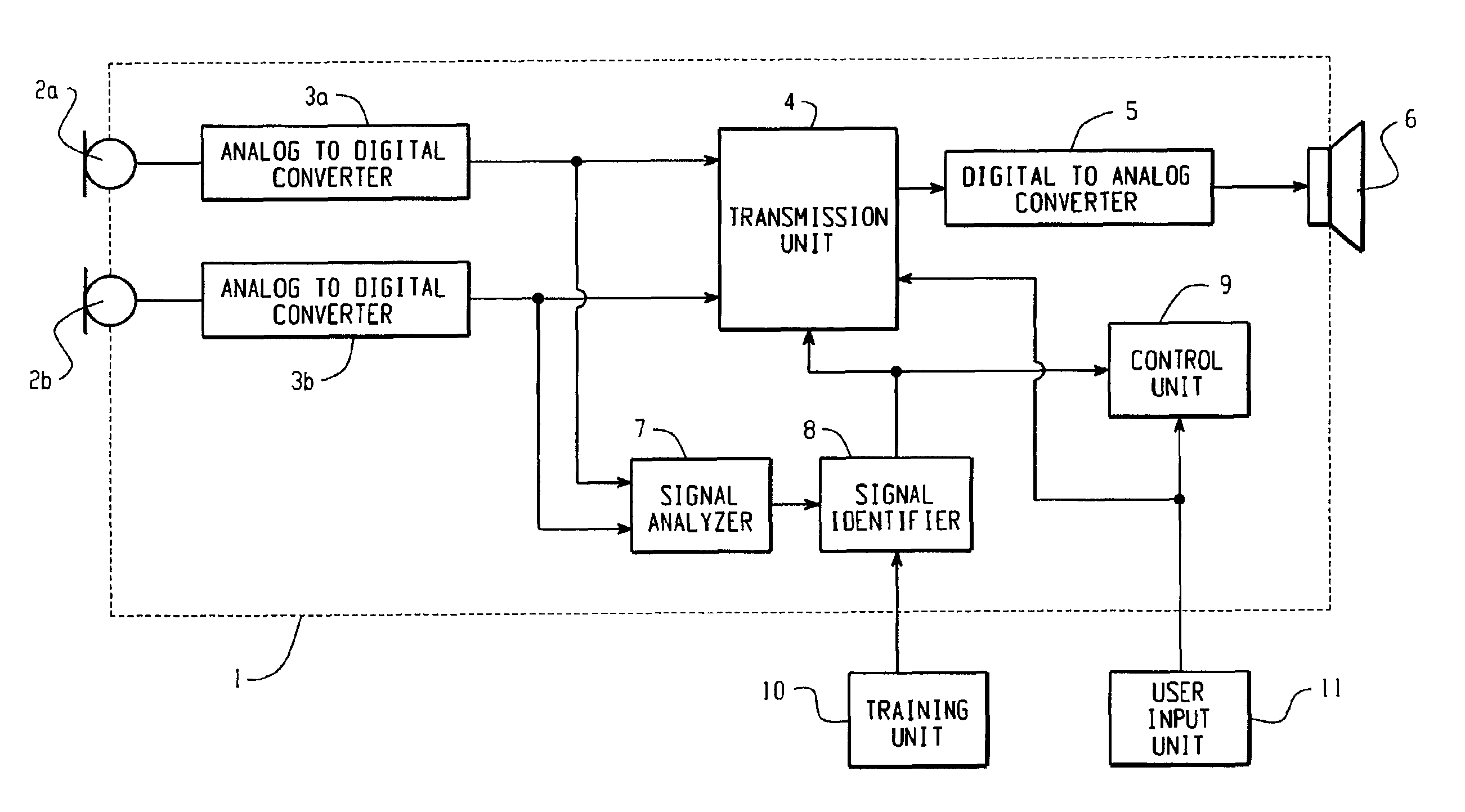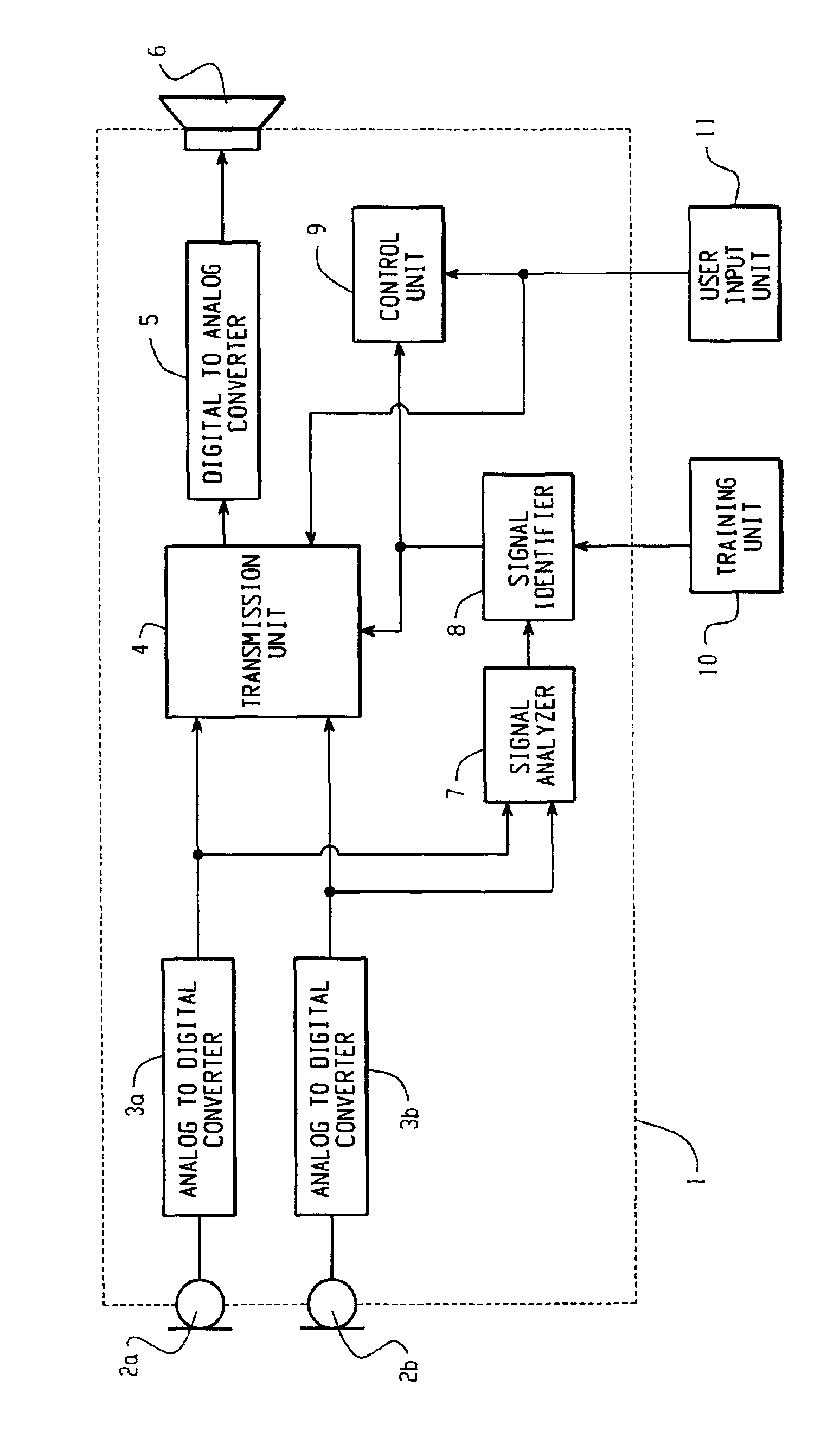Method for identifying a momentary acoustic scene, application of said method, and a hearing device
a momentary acoustic scene and hearing device technology, applied in the field of momentary acoustic scene identification, can solve the problems of difficulty, difficulty, even impossible, switch program setting is a nuisance, and all pattern recognition methods mentioned are deficient in one resp
- Summary
- Abstract
- Description
- Claims
- Application Information
AI Technical Summary
Benefits of technology
Problems solved by technology
Method used
Image
Examples
Embodiment Construction
[0013]The hearing device 1 incorporates in conventional fashion two electro-acoustic converters 2a, 2b and 6, these being one of several microphone 2a, 2b and a speaker 6, also referred to as a receiver. A main component of a hearing device 1 is a transmission unit 4 in which, in the case of a hearing aid, signal modification takes place in adaptation to the requirements of the user of the hearing device 1. However, the operations performed in the transmission unit 4 are not only a function of the nature of a specific purpose of the hearing device 1 but are also, and especially, a function of the momentary acoustic scene. There have already been hearing aids on the market where the wearer can manually switch between different hearing programs tailored to specific acoustic situations. There also exist hearing aids capable of automatically recognizing the acoustic environment. In that connection, reference is again made to the European patens EP-B1-0 732 036 and EP-A1 814 636 and to t...
PUM
 Login to View More
Login to View More Abstract
Description
Claims
Application Information
 Login to View More
Login to View More - R&D
- Intellectual Property
- Life Sciences
- Materials
- Tech Scout
- Unparalleled Data Quality
- Higher Quality Content
- 60% Fewer Hallucinations
Browse by: Latest US Patents, China's latest patents, Technical Efficacy Thesaurus, Application Domain, Technology Topic, Popular Technical Reports.
© 2025 PatSnap. All rights reserved.Legal|Privacy policy|Modern Slavery Act Transparency Statement|Sitemap|About US| Contact US: help@patsnap.com


